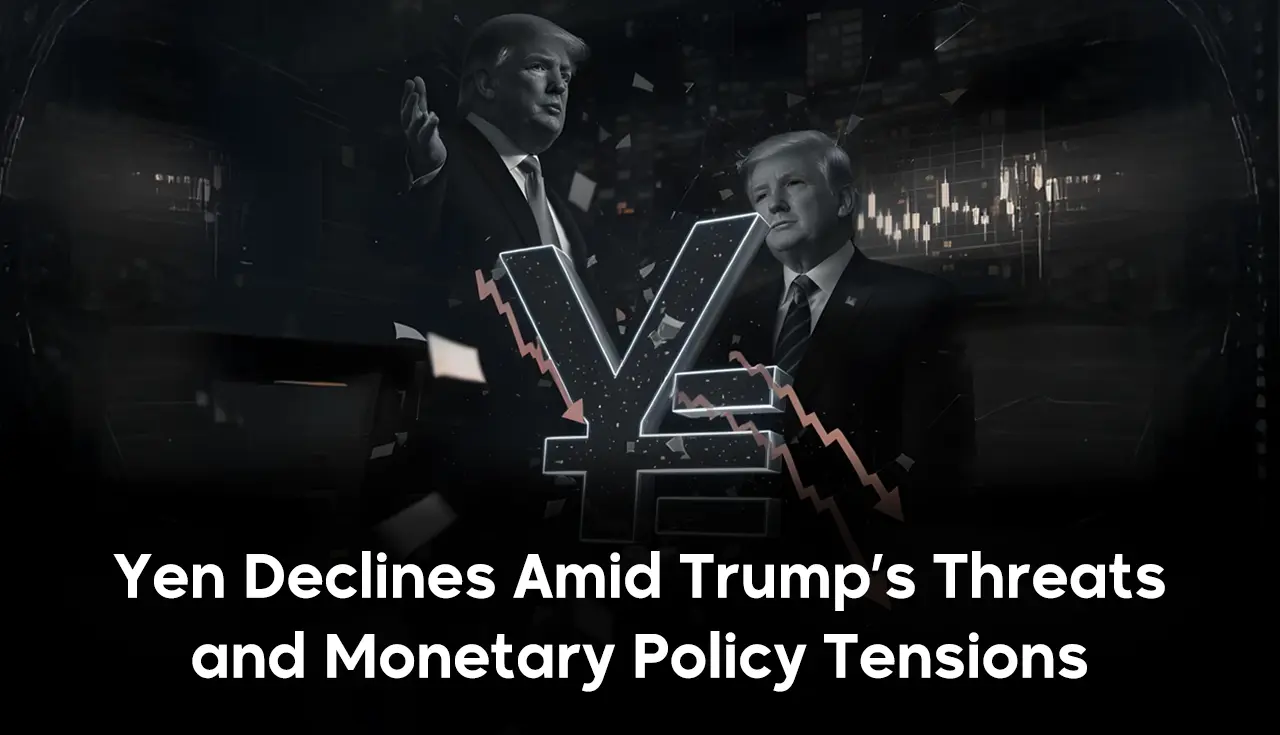The Japanese yen continued its decline during Wednesday’s trading session, pressured by comments from U.S. President Donald Trump that reignited doubts about the possibility of reaching a trade agreement with Japan. Trump threatened to impose tariffs ranging between 30% and 35% on Japanese imports, compared to the 24% he previously announced on April 2, which intensified pressure on the yen and triggered additional selling.
At the same time, improved risk appetite in global markets reduced demand for the yen as a safe-haven asset. This supported the rise of the USD/JPY pair, which continued to recover from its lowest level in about a month, aided by limited buying of the U.S. dollar despite ongoing expectations weighing on the greenback due to potential interest rate cuts by the Federal Reserve in the coming period.
Meanwhile, divergences in monetary policy stances between the Bank of Japan (BoJ) and the Federal Reserve continue to influence investor positioning. While the BoJ remains cautious in adjusting its policy Governor Kazuo Ueda reaffirmed that core inflation remains below target the sustained overall inflation above 2% for nearly three years has strengthened market belief that the BoJ is gradually shifting toward policy normalization, potentially slowing further yen depreciation.
In the same context, new BoJ board member Kazuyuki Masu noted that the bank should not rush to raise interest rates given various economic risks. However, continued inflationary pressures in Japan keep the possibility of a rate hike in 2025 on the table, especially if global trade tensions subside.
In the U.S., Federal Reserve Chair Jerome Powell stated that the central bank could have begun cutting interest rates if not for Trump’s plan to impose additional tariffs. He added that the timing of any rate cut would depend on upcoming economic data. Despite this, markets still see a low probability of a rate cut in July, while estimates suggest a more than 75% chance of a cut at the September meeting. This outlook has pushed the dollar to its lowest level since February 2022, which could cap further upside in the USD/JPY pair.
On the economic front, the U.S. Manufacturing PMI showed continued contraction in industrial activity for the fourth consecutive month, albeit at a slower pace. The index rose to 49 in June from 48.5 in May, beating expectations. Additionally, data from the Bureau of Labor Statistics showed job openings at the end of May reached 7.769 million, up from 7.395 million in April, exceeding forecasts.
Investors now await the release of the U.S. private payrolls report later today, with focus turning toward Thursday’s nonfarm payrolls data, which is seen as a key indicator for the economic outlook and the Fed’s next policy move.
Stay informed about global markets through our previous analyses. and Now, you can also benefit from LDN company services via the LDN Global Markets trading platform.







